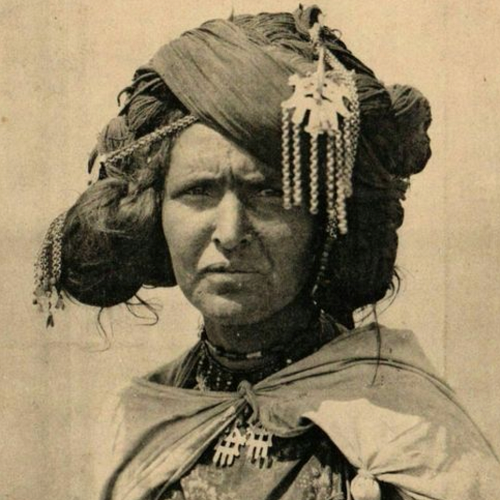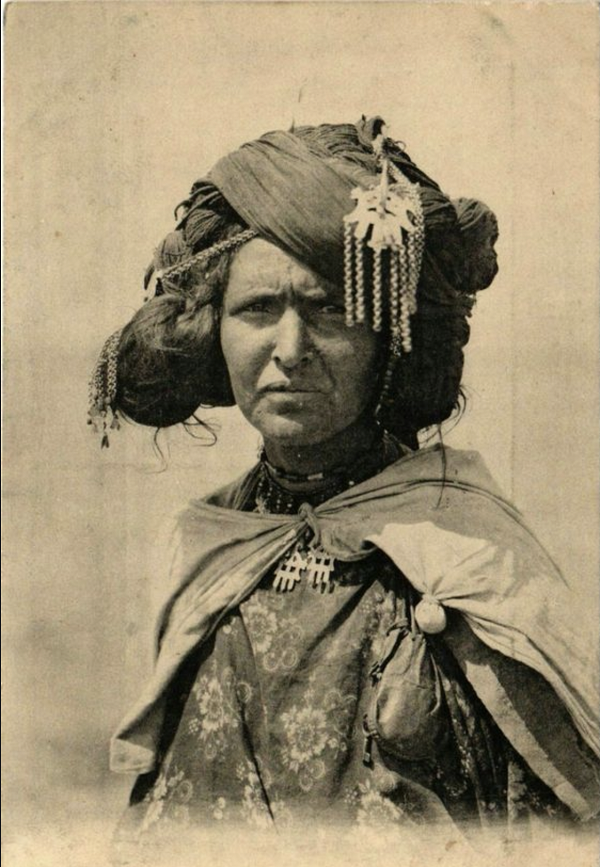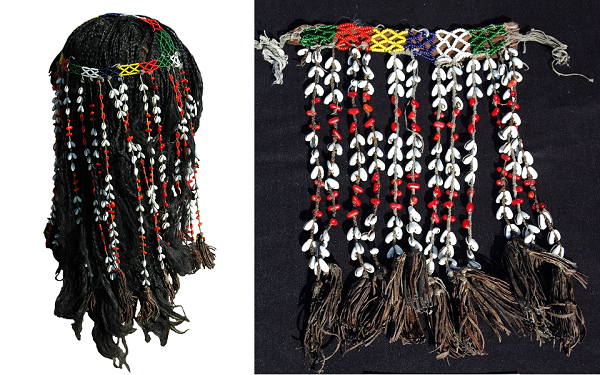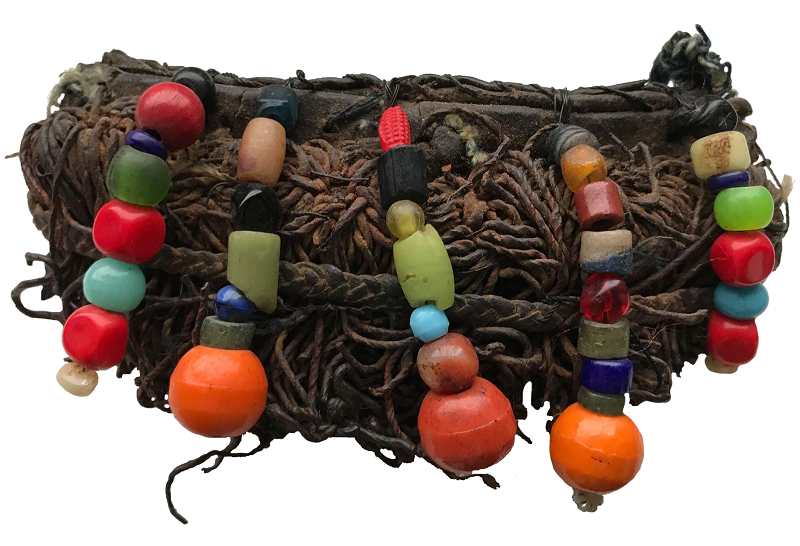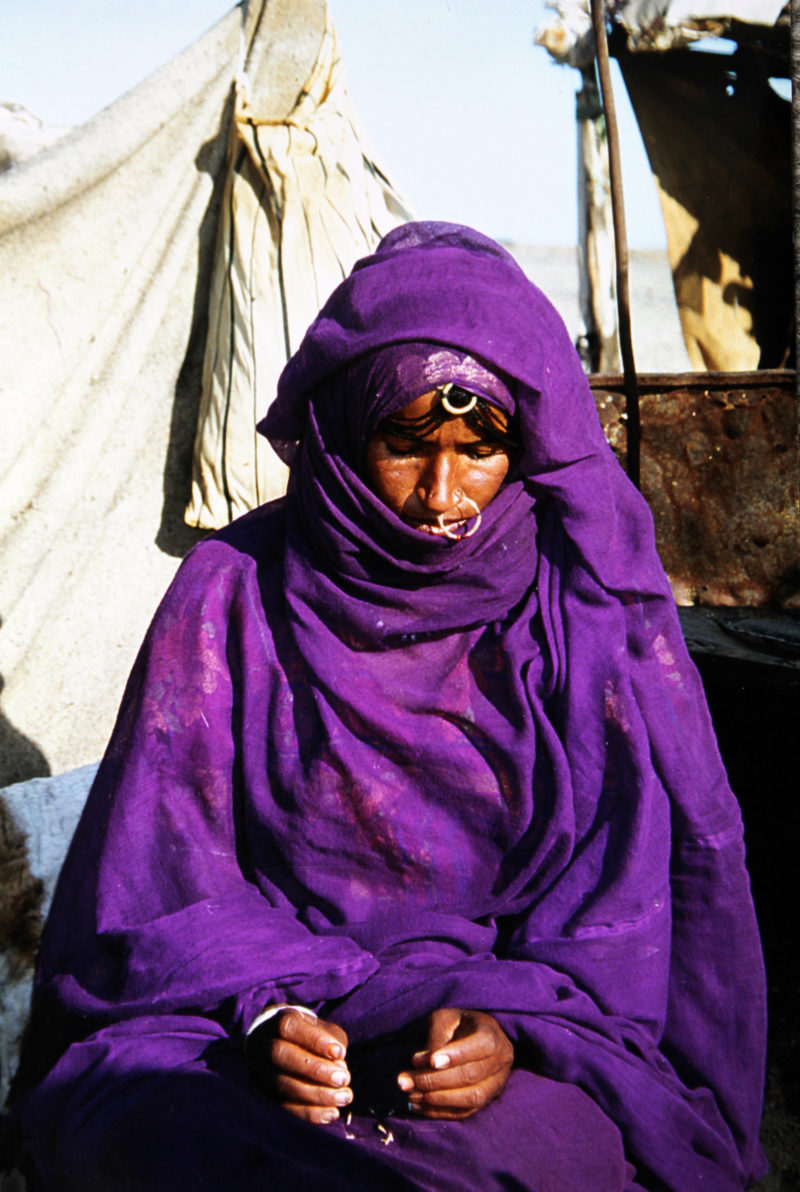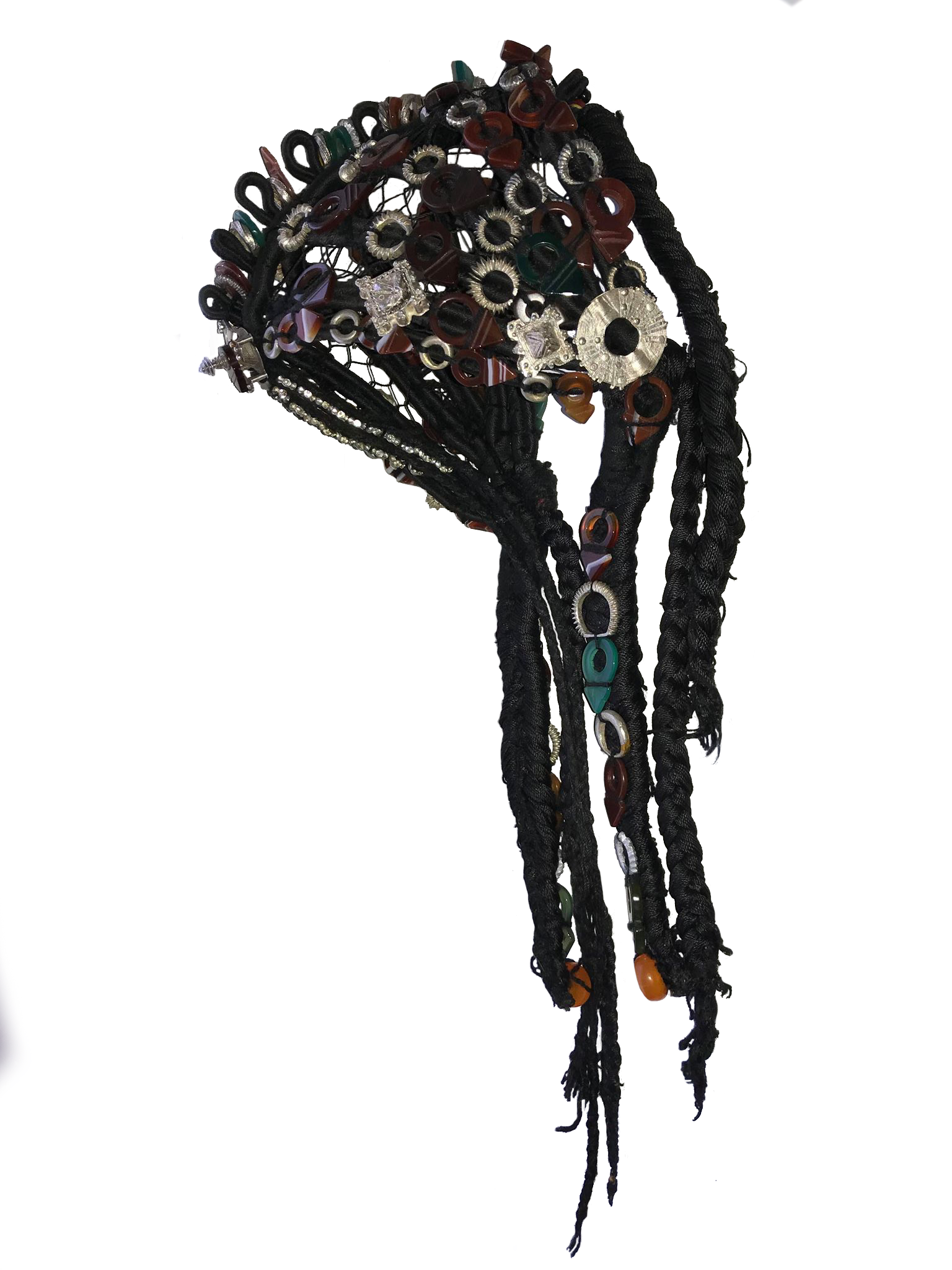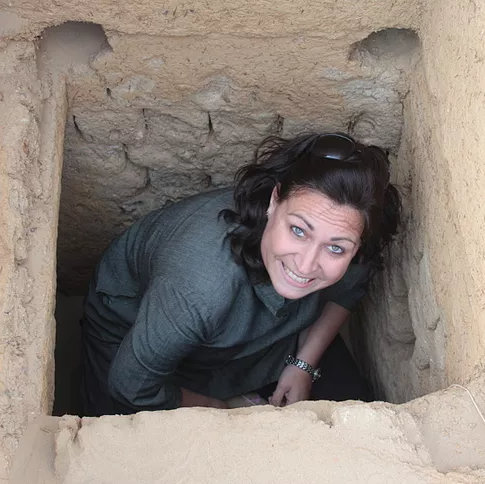In the Maghreb, hair is often dressed very elaborate and includes, especially among young women, intricate braids that are combed and modelled forming three-dimensional coiffures. Braids in these hairstyles sometimes protrude from the head and are looped back towards the head. These coiffures leave ample room to apply ornamentation, a custom practised frequently and with typical ornaments.
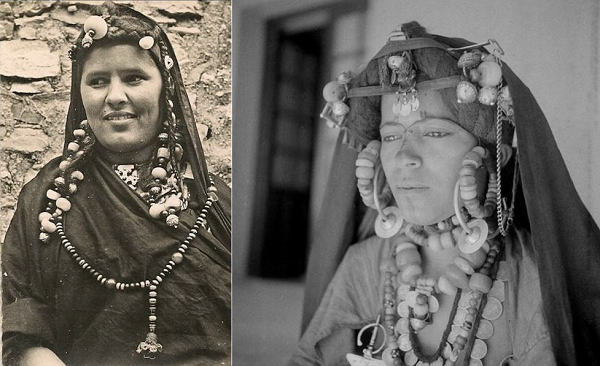
Left: postcard of a woman wearing aggrab beads. Right: an image of a woman wearing aggrab beads and temple ornaments by Jean Besancenot
The variation in shape and material of those ornaments is quite large and includes objects and shapes such as beads, tassels and fringes, amulets, or fake hair pieces. Sometimes more elaborate and more complex ornaments allow for applying scent, colour, sound, or the possibility to increase the volume of the hairstyle. These items serve a decorative purpose but also function in a more complex world of magical power and protection where they each have their own semantics.
Hair ornaments and beyond
One of the interesting features of hair ornaments in this region is that some of these amulets can also be applied to other parts of dress and are not limited to hairstyles. Some are applied to textile head covers (such as the tanfouk) or to jewellery items, and to make matters even more complex, sometimes the textile strips to which these items are applied, also double as a hair piece to increase the volume of the hairstyle. It shows that the ideas about how these ornaments function are quite flexible, and that is what makes hair ornaments from this region such an interesting case for dress anthropology. The fact that the line between hair decoration, ear, forehead, veil or headcloth ornamentation is a very thin one is interesting and exciting. It means that head jewellery is far more complex than one may expect or take at face value, and this reflects a way of thinking that someone from outside the region may not be used to.
Hair ornaments as jewellery
Earrings are for instance draped over the ear and pass through the perforated earlobe, but the weight of the ornamentation is not carried by the ear itself, this may instead be supported by a braid or tress of hair. The object may be attached to a hair strand with the aid of a string. Some ornaments are applied to artificial hair pieces to facilitate wearing and are not fastened to the wearer’s own hair at all. In other words, hair is often used as extra support for head ornamentation that we might call ear or (fore)head jewellery, rather than a hair ornament. The hair in these instances just serves a practical function. Some examples are described below.
In the West Asian and North African regions, hairpieces or wigs made of leather, rope, synthetic fibre, and animal or human hair are worn as a substitute or an addition to a woman’s hairstyle. Hair pieces are often applied to the wearer’s own hair to increase volume. They may be ready-made and decorated elaborately with beads made of various materials and colours, and amulets to ward off evil and attract good fortune or health (for more information on the use of colour see Sigrid van Roode’s blog post on this subject). A leather brow ornament with beads from the Maghreb is a good example. This is worn on a woman’s forehead and is meant to resemble strings of hair decorated with stone beads.
An ingofa headdress made with synthetic threads braided by local women is depicted here as well. Women purchase and sew the various decorative elements onto the headdress after the wig is made. Zakate is the local name for the stone decorations, courcourou the name of the silver discs and ajouroutane the name of the silver rings applied to the wig. This particular object was used in Timbuktu, Mali. Because they weren’t considered comfortable, they were added separately to a wig since the 1980s.
From the region of Oman leather wigs or shabka headdresses similar to the false hair pieces and wigs from the Maghreb are worn to simulate hair as well. In these hair pieces decoration is applied in a similar fashion as the hair pieces from the Maghreb. A headcover made of synthetic fibre, decorated with leather fringes is worn by the Ababda nomads of the Egyptian Eastern Desert. In the postcard image, you see a Beja woman from East Africa wearing an elaborately braided hairstyle, decorated with beads and shells.
An interesting silver temple ornament is worn mainly in West Africa, Morocco, and Mauritania. These ornaments are made of open-worked metal and can be stuffed with perfume or otherwise scented materials such as cloth, wool or cotton. At the tip, the ornaments were often decorated with enamel. It gives out a pleasant odour as a woman goes by. This ornament is also sometimes applied to the lower regions of the larger hair tresses or braids. They are often quite large and heavy.
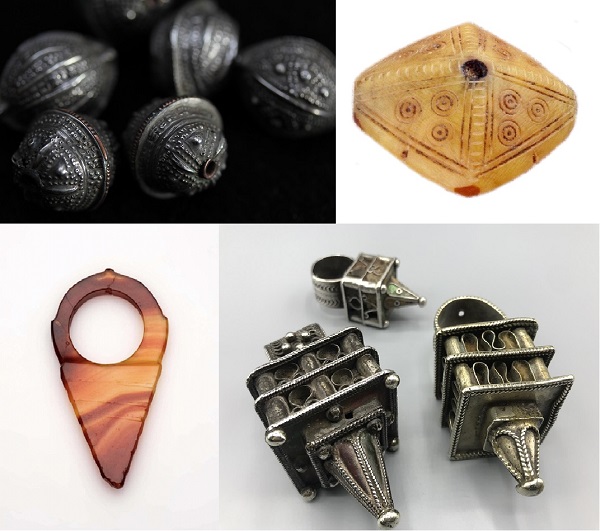
Top left: Aggrab beads; Top right: Fake amber bead; Bottom left: Tanfouk from the National Museum of Cultures, The Netherlands; Bottom right: Temple ornaments
Another, very typical hair ornament is the tanfouk or talhakimt worn by villagers and nomads in the West-African region. The talhakimt comes in various sizes, forms and materials such as glass, plastics (bakelite), stone, or metal. The objects are sewn onto the hair or braided into the hairstyle just as the decorative hair rings might be. Since some of these items are made of stone and can be quite large, the weight on the hair and head can become significant and may even cause scalp irritation.
The last category of hair ornaments is beads. False amber hair bead from Mali for instance. These ornaments were originally tied into the hairstyle at the end of certain braids. The same is true for the silver metal bead, locally (Mauritania) called aggrab el-fadda, referring to fertility and prosperity. These beautifully decorated silver, hollow (hammered) beads with their typical surface decoration are applied (often tied) to the braided hair strands.
About the Author
Jolanda E.M.F. Bos is an archaeologist and dress anthropologist. Her research fields comprise archaeological beadwork analysis, contemporary costume, personal adornment (as the combination of dress, body decoration, veils, jewellery and amulets) and the social implications of dress.
Over the last twenty years Jolanda has been working at several excavations in Egypt (at the moment at Tell el Amarna, Egypt) and the Netherlands, as well as on museum exhibits both in the Netherlands and in Egypt. At present, she studies ancient Egyptian hairstyles from Tell el-Amarna at the University of Leiden (the Netherlands) as part of her PhD research.
Jolanda is the author of several articles and books (i.e., ‘Paint it, Black’ and ‘Egypt’s Wearable Heritage’), and regularly lectures on the subject. She is also the driving force behind the Wearable Heritage website. Wearable Heritage is also on Instagram account and Facebook.
* All images (except postcards) by the author. All artefacts are part of the Wearable Heritage collection.
